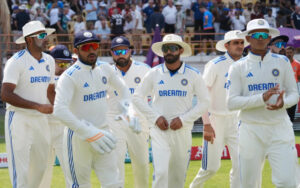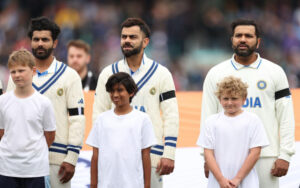
RevSportz Comment
Matthew Engel edited The Wisden Cricketers’ Almanack 12 times between 1993 and 2007. “India has seized the control of cricket that until the 1990s resided in London,” he wrote in The Financial Times in 2015. “The old imperialist rulers had a feel for the game, a measure of integrity and insufferable arrogance. The new Indian masters have displayed the third attribute all right but not the other two.”
It’s now decades since Lord’s was the seat of cricket power. You wouldn’t think it though if you saw the way some in their bacon-and-egg-coloured ties strut about. India, especially in the years since Jagmohan Dalmiya demanded and got a seat at the top table, has constantly been a pet peeve for those still stuck in the Rule-Britannia time warp.
In the 2010s, much of the handwringing was about the Indian Premier League (IPL) and how the Board of Control for Cricket in India (BCCI) would kill off Test cricket. That there wasn’t the slightest bit of anecdotal evidence to support this was another matter. In fact, India played more Test cricket in the 2010s – 107 matches – than they ever had before. As many as 249 of the 579 Tests India have played have been in the 21st century.
Next summer, India will again play a five-Test series in England, starting at Headingley in June. The early start is presumably to shoehorn in The Hundred, England’s unprofitable and shoddily managed equivalent of the IPL. It will be the fourth straight series in which India have played five Tests in an English summer. Between 1959 and 2014, they didn’t play one.
Somewhere in his Chennai offices, N Srinivasan might be chuckling away. Decried as the devil incarnate by many – he did own the IPL’s Chennai Super Kings – Srinivasan was at the helm of Indian cricket when the decision was made to play five Tests in England in 2014. After a 5-0 drubbing at the hands of Fred Trueman, Brian Statham and friends, India had thrice played four Tests in England – in 1979, 2002 and 2011. Every other series had been of three Tests, with many of them scheduled in the early part of summer reserved for less important touring sides.
For the Latest Sports News: Click Here

By then, the England and Wales Cricket Board (ECB) were well aware of ground realities. India’s tour of 2011, which included the 2000th Test, was the last time that the likes of Sachin Tendulkar, Rahul Dravid and VVS Laxman played there. MS Dhoni’s team lost 4-0, with the final two Tests especially one-sided, but the ECB still banked a profit of around 15 million pounds.
The following summer, South Africa, then ranked No. 1 in the world, were the tourists in the marquee series. That year, the ECB made a loss of a million pounds. Staging two Ashes series in 2013 and 2015 stabilised the accounts somewhat, and the Indian tours of 2014, 2018 and 2021 – one match was moved forward to 2022 because of Covid-19 – also proved to be money-spinners.
Like the West Indies of old, India are now the visitors that every team wants, or even needs, to stay solvent. But while West Indies were mostly greeted with warmth and respect, it’s rare for an India series to pass without some sort of carping about the BCCI and its riches. It is no coincidence that India will also play a five-Test series in Australia this winter, for the first time since a teenage Tendulkar made waves with two centuries in 1991-92.
The IPL is now indeed a behemoth, far bigger than even Lalit Modi, its creator, could have envisaged. But there has been no sign that the BCCI will promote it at the cost of other formats. India continue to play Tests. Series against Bangladesh and New Zealand this home season will bring in no rewards, but the BCCI continues to accommodate as many different teams as they can, especially when it comes to taking India abroad. For teams like Ireland, even an abbreviated white-ball series, with Indian sponsors, is enough to pay the bills for the next few seasons.
So much for the doomsday prophecies from a decade ago. Not only do India continue to play red-ball cricket, they’re better than most at it. After back-to-back appearances in the World Test Championship final, they’re well on course to make it to Lord’s for the next summit clash in 2025.
Dalmiya and his compatriots like Inderjit Singh Bindra taught Indian cricket how to make money and become profitable. And in a delicious twist of fate, those lessons are now being used to help those who once turned up their noses at Indian cricket.